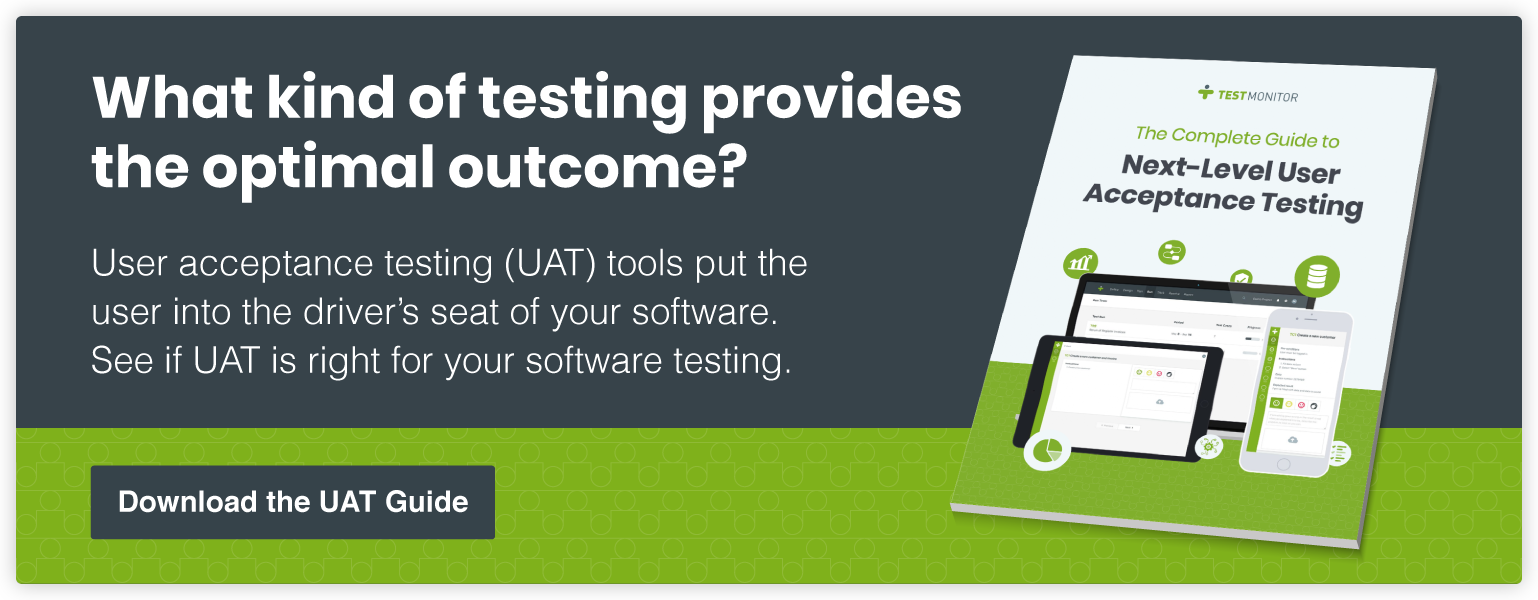5 Challenges to Overcome in Your UAT Process
Whether you have been a user acceptance testing (UAT) pro for years or are participating in your first test run, you will always experience equal doses of excitement and nerves when users finally get to evaluate your team’s hard work.
Despite these emotions, UAT is a vital part of the software development process, providing the data and feedback you need to be sure that your software delivers value for end users and meets their expectations for functionality and usability.
However, many organizations face hurdles during their UAT process that affect not only the testing schedule, but also the effectiveness of their work. The TestMonitor team has witnessed them over the years, so we wanted to pull together this list of the top five challenges testing teams face during the UAT process and the steps your team can take to overcome them.
Ready? Let’s dive in!
5 Challenges in Your UAT Process (and How to Overcome Them)
No matter the industry or scope of the software in development, there are common hurdles that teams face when conducting UAT. Here are the top five challenges the TestMonitor team has seen and the steps your team can take to overcome them:
1. Collaborating with Testers
There’s no denying that there are many moving parts in software testing. This complexity and need to stay connected with stakeholders are especially important when communicating with your testers (i.e., quality assurance (QA) professionals and representative end users) during test runs.
Fortunately, modern test management tools make it easy to create intuitive, personalized tester dashboards that display upcoming tests, document feedback in written and photo form and store that feedback for future reference.
2. Setting and Sticking to a Testing Schedule
Software development projects are notorious for slipping schedules, which is why it is tempting for some teams to cut corners when performing QA testing.
To help overcome this common challenge:
- Be specific and focused when identifying objectives for each test run.
- Define (and stick to) a consistent testing approach.
- Utilize test case libraries and project templates to streamline the administrative elements of test management.
- Map and share your testing timeline with stakeholders so they can budget their time accordingly.
3. Establishing and Managing UAT Scope
Comprehensive testing is the goal, but not every element needs to be tested all at once or with the same priority.
Instead, define the specific requirements to be tested, lay out expectations for each UAT participant, and establish boundaries for the requirements to be tested in each run. In other words, take a critical approach to avoid bogging down your testing with “nice-to-have” aspects when security, performance, and usability requirements are more essential.
4. Defining and Tracking Requirements
Software should be fit-for-purpose, which requires an understanding of functional and business requirements and checks along the way to confirm they are being met.
Modern test management platforms give test managers the tools they need to track requirements from end to end, prioritize remediation tasks, and design, execute, and manage test runs until sign-off is achieved.
5. Communicating UAT Test Results
Although black-box testing is a well-established testing technique, the same principle shouldn’t be applied to sharing the status of the testing schedule and results.
However, generating and sharing reports with stakeholders can quickly become time-consuming without the right tools.
Industry-leading test management tools make setting up, filtering, and displaying test results and tester feedback easy, allowing necessary reports and defects to be sent to the right development team and reducing clutter to help focus their time. Similar reports can also be generated and sent to your management team, keeping them engaged and proactively answering questions about progress.
Take Your UAT to the Next Level with TestMonitor
It can be tempting to bypass or limit the role of UAT, but having the right test management tool can make this critical process easier to manage and administer, project after project. In the end, your organization will produce higher-quality software with fewer defects in less time.
And that is what TestMonitor delivers. Our platform is designed to handle the full testing lifecycle, making it easy to collaborate no matter where your testers are and integrate with existing technology ecosystems and workflows.
Do you want to learn more about getting the most out of your organization’s UAT? Then take a moment to check out our complete resource, The Complete Guide to Next-Level User Acceptance Testing, available now!







